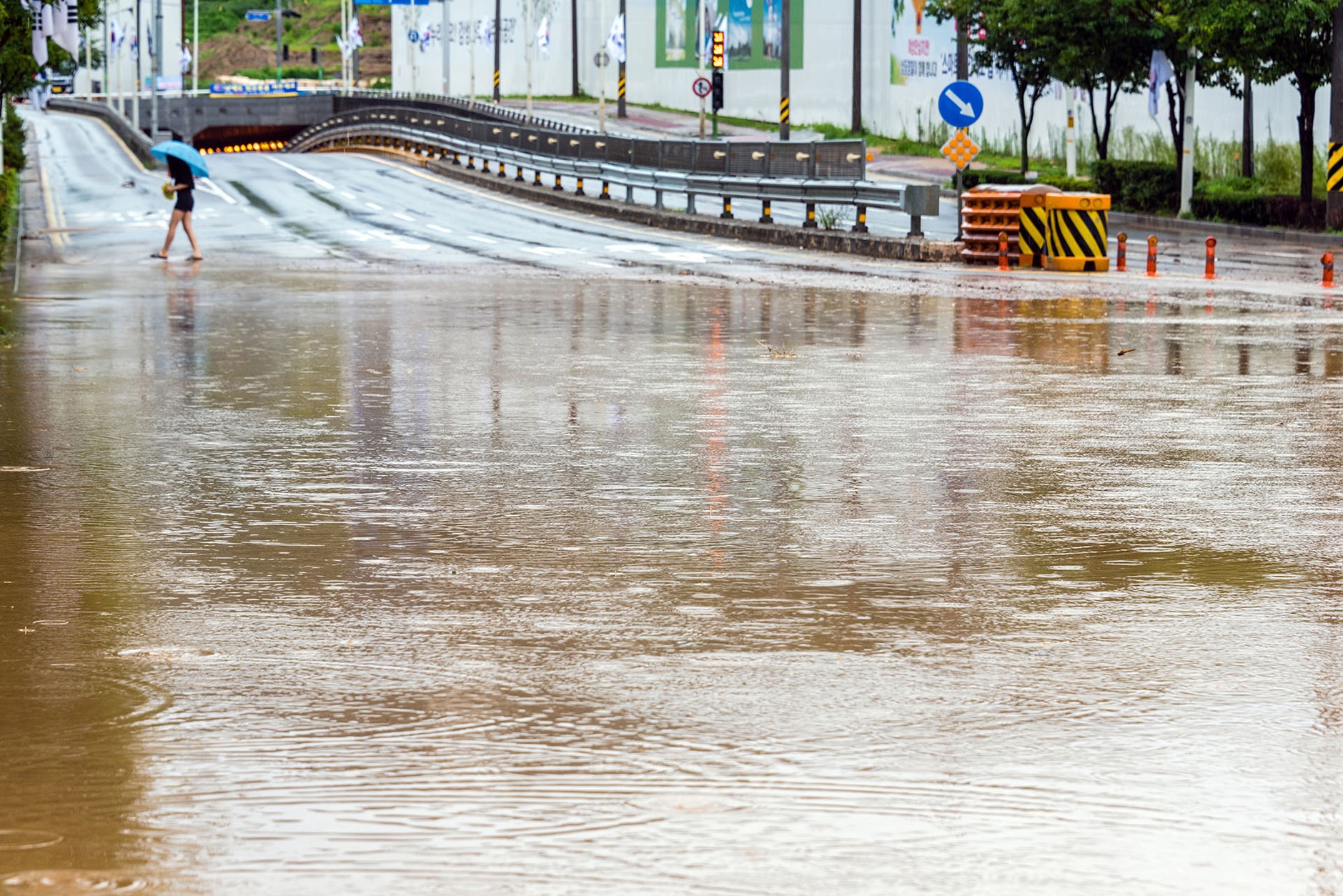Tunnels can help combat climate events
An increase in extreme weather conditions is making cities ever more vulnerable to flooding. Protecting existing underground infrastructure is critical, but tunnels may also present a long-term solution to a growing problem, writes Mike Wongkaew.
In July of 2023, the people of the South Korean city of Cheongju learned just how vulnerable urban landscapes have become to the dangers of extreme weather. Heavier than usual rain during the country’s monsoon season caused a river in the city to burst its banks, flooding a 685-meter tunnel and lives were lost. Last year flooding hit the capital, Seoul, following the highest rainfall in 80 years. More people perished and 2,800 buildings were damaged.
U.S. cities have witnessed similar damage. In 2012 Superstorm Sandy flooded nine subway stations and two interborough tunnels in New York City, causing blackouts, huge disruption and billions of dollars in damage. Climate change is increasing the likelihood of such events. Rising sea levels threaten coastal communities while more intense rainfall threatens flooding in all urban areas.

Tunnels are highly susceptible to flooding, but they also can be adapted to protect the infrastructure that uses them, such as roads and rail systems. With innovative design and bold planning, they can be designed effectively in a city’s broader flood resilience system.
Protecting portals
Given that many tunnels are below ground, they have long been designed and built to be watertight and with features that provide flood defence. Anti flooding measures include drainage systems, pumps, waterproofing of walls and ceilings, and increasingly sophisticated flood warning systems.
As both Cheongju and Sandy showed, however, the points of vulnerability are increasingly the portals to infrastructure, and as risk intensifies finding solutions to that issue has become a priority.
Some of the most striking images of Sandy show water pouring through elevator shafts following the storm surge, while the low-lying Brooklyn-Battery road tunnel also filled with storm water. New York City’s Metropolitan Transportation Authority spent $7.8bn on the Sandy clean up, building more climate resilience into its system after the flood. The subway system is now protected by Kevlar flex gates installed over stairwells, manhole covers and marine doors. In all 3,000 mitigation devices were added in the subway system. The Brooklyn-Battery bridge now has 22-ton portal doors added to its entrance.

AECOM was one of several firms recently selected by the New York City Department of Environmental Protection (NYCDEP) “to provide design services for the City’s cloudburst management program, alleviating nuisance flooding events in at-risk areas.” Cloudburst management involves the deployment of multiple elements to store, absorb or transfer excess stormwater.
Other cities have taken a similar approach to flood management. The Mass Rapid Transit Authority of Thailand, which operates Bangkok’s metro system has designed stations on its network so that their entrances are constructed higher than any flood level recorded in the city in two centuries.
These examples illustrate the need for integrated planning bringing together climate adaptation, resilience planning and transportation engineering to design solutions that can be installed in new construction projects or retrofit into existing infrastructure.
Combining storm management with transportation design
Tunnel systems have long been used to handle storm water in cities including Chicago, which is implementing its Tunnel and Reservoir Plan to mitigate the impact of severe weather and reduce flooding.
A project aimed at keeping the center of Kuala Lumpur free from flood water could signal the future of storm management, with tunnels an innovative part of the solution rather than simply a point of weakness.
The Malaysian capital has gone one step further with a Stormwater Management and Road Tunnel (SMART) – a dual project to carry road traffic and store storm water until it can be safely moved. The tunnel has four modes determined by severity of the rainfall, with mode one being normal operation with low rainfall and no flooding. In mode two water is diverted into a lower channel while traffic flows above. In modes three and four the tunnel is closed to traffic completely. Additional capacity is provided by other storage facilities.
The six-mile structure is the world’s longest multi-purpose tunnel. Because it is in constant use, rather than just during floods, the structure is more affordable. During the peak of storm season of December 2021, SMART handled an estimated five million cubic meters of water.
Rising risk must be met with mitigation activities
There is little doubt that climate change will bring increased risk of extreme weather events that threaten urban environments, particularly in coastal communities.
A 2022 study from Nature Climate Change indicated that the cost of flood damage in the US could rise from $32.1bn in 2020 to $43bn in 2050. It noted that, “the future increase in risk will disproportionately impact Black communities, while remaining concentrated on the Atlantic and Gulf coasts,” and that the projections, “make clear the need for adaptation to flood and emergent climate risks in the United States.”
Cities seeking solutions to current and future problems can deploy increasingly sophisticated mitigation planning and design that incorporates water management and transportation infrastructure needs. Our practices across the U.S. and the world incorporate both expertise and deep experience in these disciplines, as well as climate mitigation and urban design. We are committed to working with municipalities to build resilient and sustainable urban environments that will help deliver a better world.






